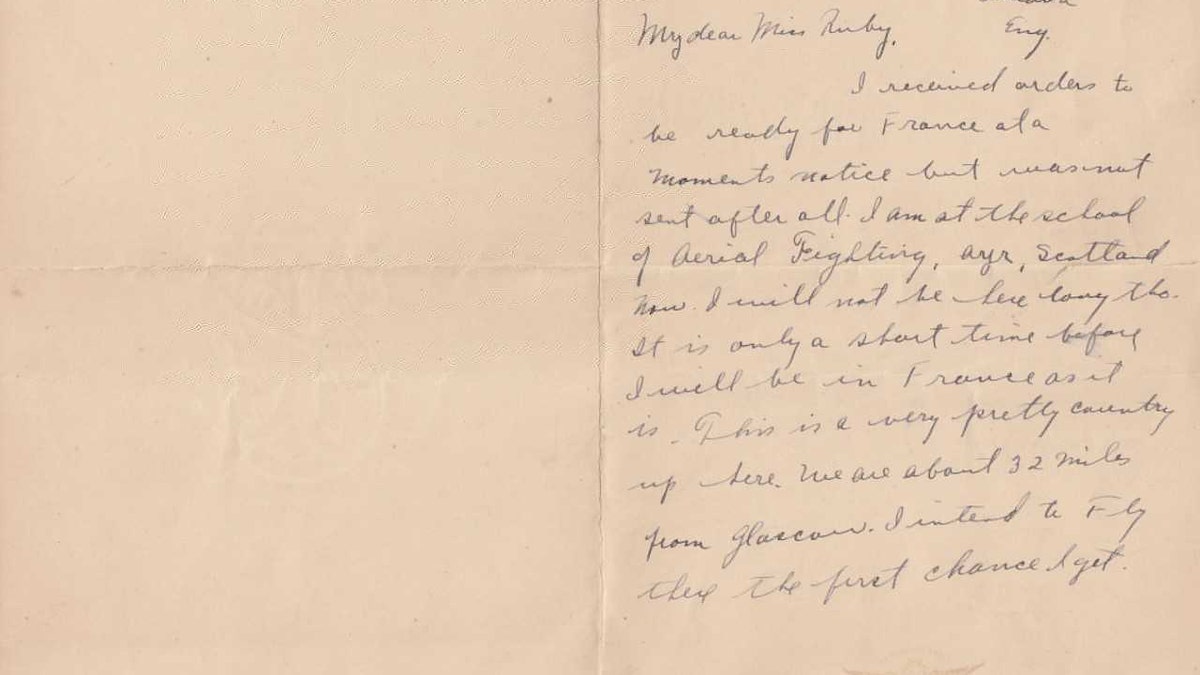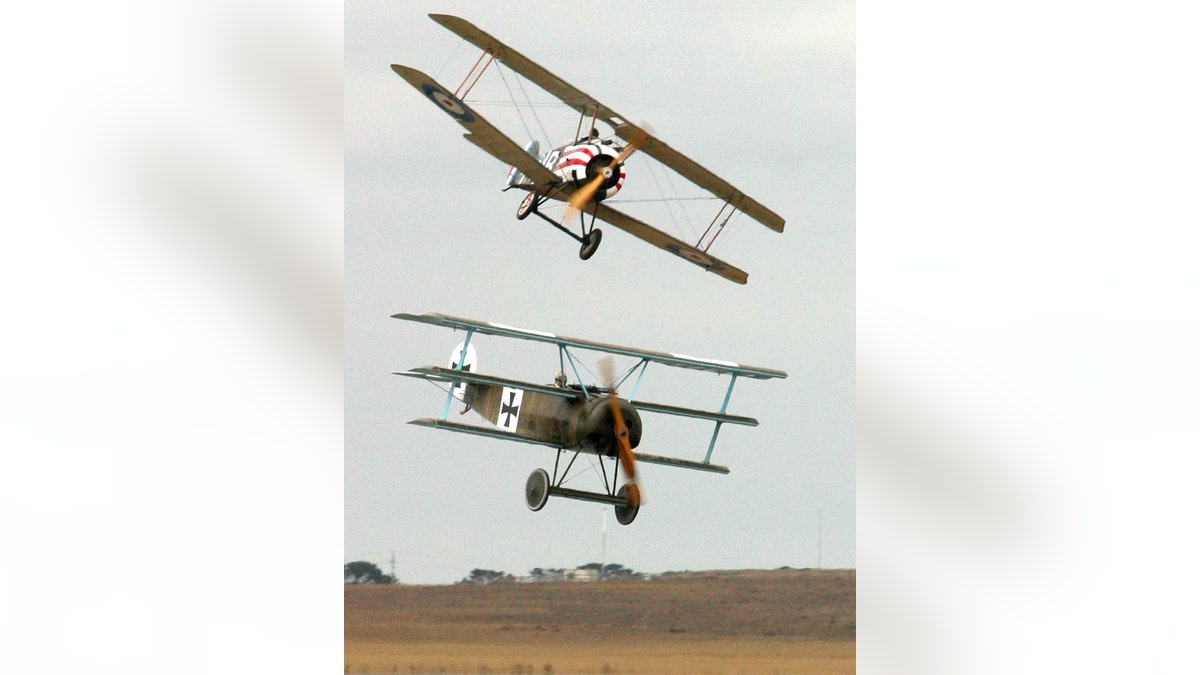
File photo - Biggleswade, UK - June 7, 2015: A reproduction of an SE5A fighter aircraft of the First World War pictured in flight over Bedfordshire, England. (iStock) (gsmudger)
A fascinating archive of wartime letters from a U.S.-born fighter ace who served with British forces during World War I are up for auction in the U.K.
Lt. Edgar Taylor was born in Rhode Island to British parents and served in the British Royal Flying Corps, which merged with the Royal Naval Air Service to become the Royal Air Force in 1918.
“The content of the letters is superlative,” explained auctioneer Andrew Aldridge of auction house Henry Aldridge & Son, in an email to Fox News. The archive, he adds “gives a rare and unedited snapshot into the life of a WWI ace.”
WWII SOLDIERS DUMPED INTO MASS GRAVE AFTER SHIPWRECKS SCAVENGED, REPORT SAYS
The first letter is dated April 14, 1918 just prior to his transfer to France. Another letter written on May 23, 1918, headed 79 Squadron RAF, describes his attempt to shoot down a German plane, only for his guns to jam.

Edgar Taylor's letter dated April 14, 1918 (Henry Aldridge & Son)
A letter dated June 14 1918 offers another incredible glimpse into Taylor’s exploits, describing a narrow escape from German fire. “We were at 15000ft and the Archies [anti-aircraft artillery] were shelling us,” he writes. “A fellow did a climbing turn and crashed into me from below, I thought I’d been hit by an Archie at first but I soon saw the other plane. We separated and I started back to our lines, gliding all the way.”
In another incident, a gas line on Taylor’s aircraft burst following a dogfight. “I was covered in petrol and I was unable to find a place to land, I crashed into a hedge wrecking my machine completely,” he wrote. “Beyond few bruises I wasn’t hurt.”
USS WARD, SHIP THAT FIRED FIRST AMERICAN SHOTS OF WORLD WAR II, FOUND IN PHILIPPINES
He also describes how a colleague he trained with had been killed in a dogfight over the German lines.

File photo - A Sopwith Camel (top) and a Fokker Tri-Plane, both vintage World War I planes, simulate combat at the Australian International Airshow in Melbourne Feb. 16, 2003. (REUTERS/Glenn Hunt)
The final letter in the archive was written just days before his death in August 1918. In addition to detailing his efforts to learn French, Taylor recounts shooting at German observation balloons. “The Archies opened up on me at once. I saw I was observed and they guessed what I was after,” he wrote. “I went as fast as my engine could carry me and immediately attacked the first balloon."
He continued: "The defending machine guns opened up in me something awful but I shook their accuracy by dropping a couple of bombs which I put aboard for that purpose.”
After dropping the bombs Taylor returned to attack the balloon. “At last I closed in and put a long burst of machine gun fire into it at close range. It commenced to smoke and burst into flames, needless to say I was wild with delight,” Taylor wrote.
WRECKAGE OF LOST WORLD WAR II BOMBER DISCOVERED IN THE NORTH SEA
The airman, who served with American aces Francis Gillet and Frederick Lord, is credited with shooting down a German Fokker D.VII plane and four balloons during his service on the Western Front, according to The Aerodrome website.
Taylor was killed on Aug. 24 1918 when he was shot down while destroying his fourth balloon. The pilot, who flew a Sophwith Dolphin biplane, was 21 years of age at the time of his death.
The letters, which have a pre-sale estimate of $7,000 to $11,120, will be auctioned on Saturday.
Follow James Rogers on Twitter @jamesjrogers
